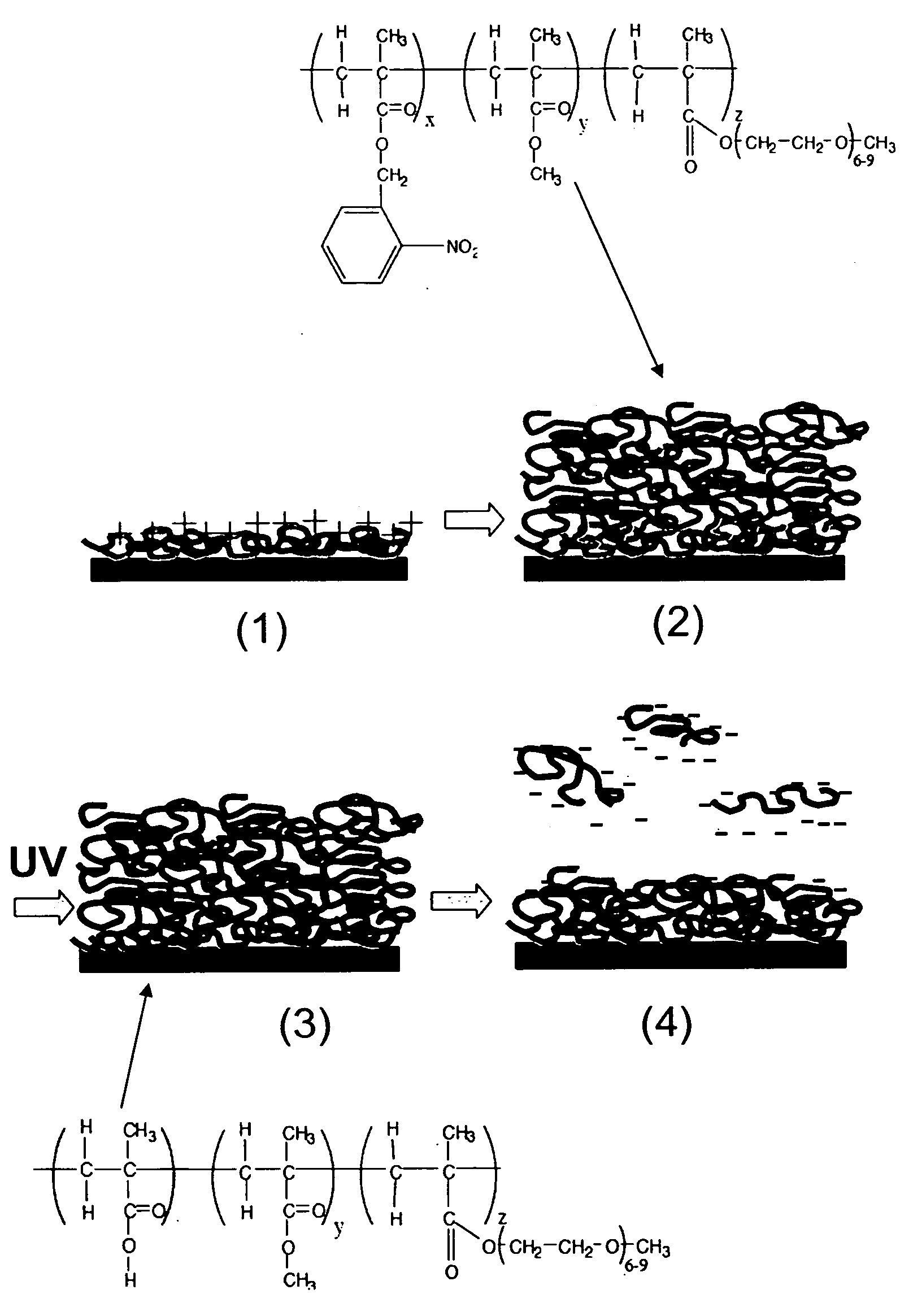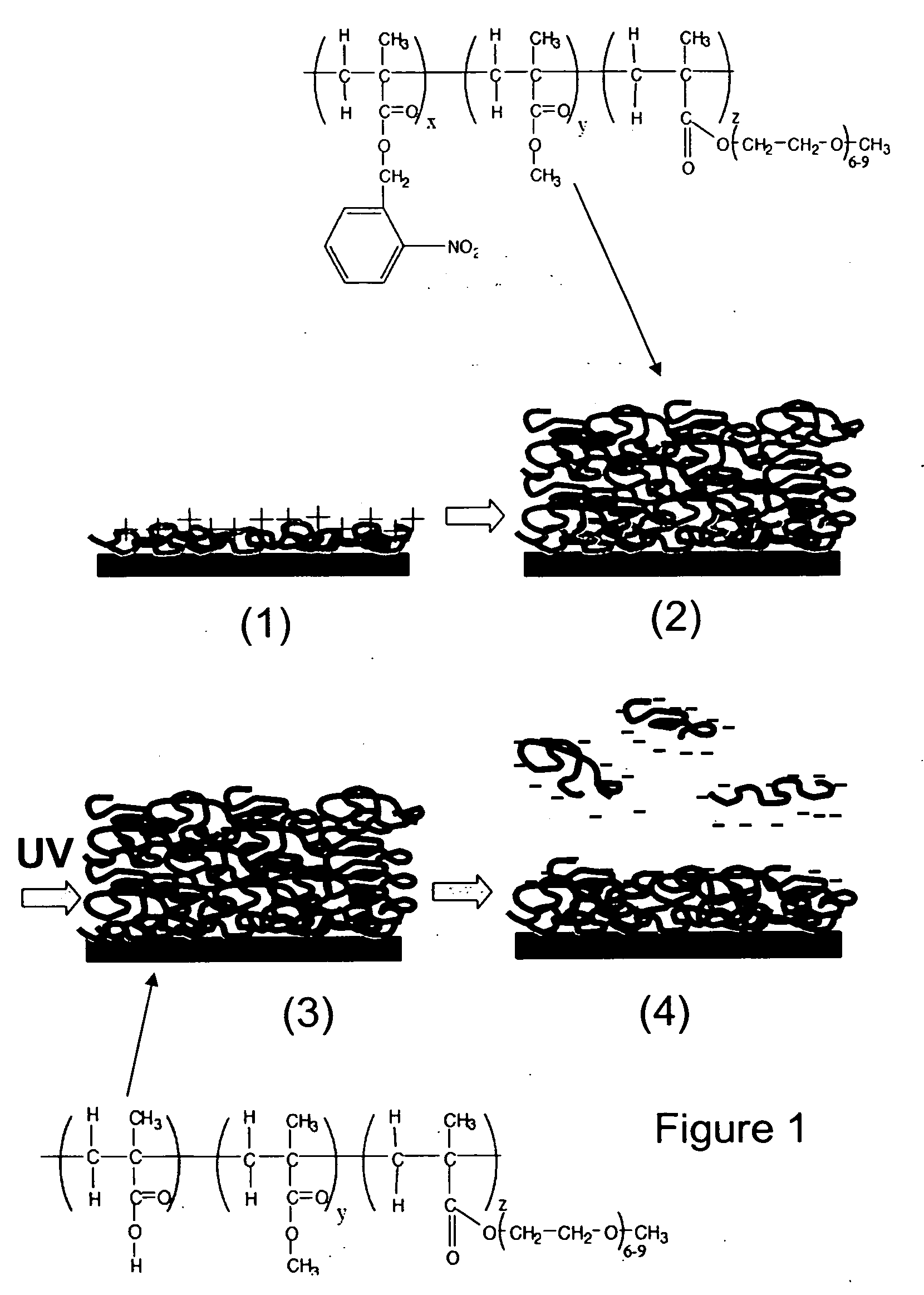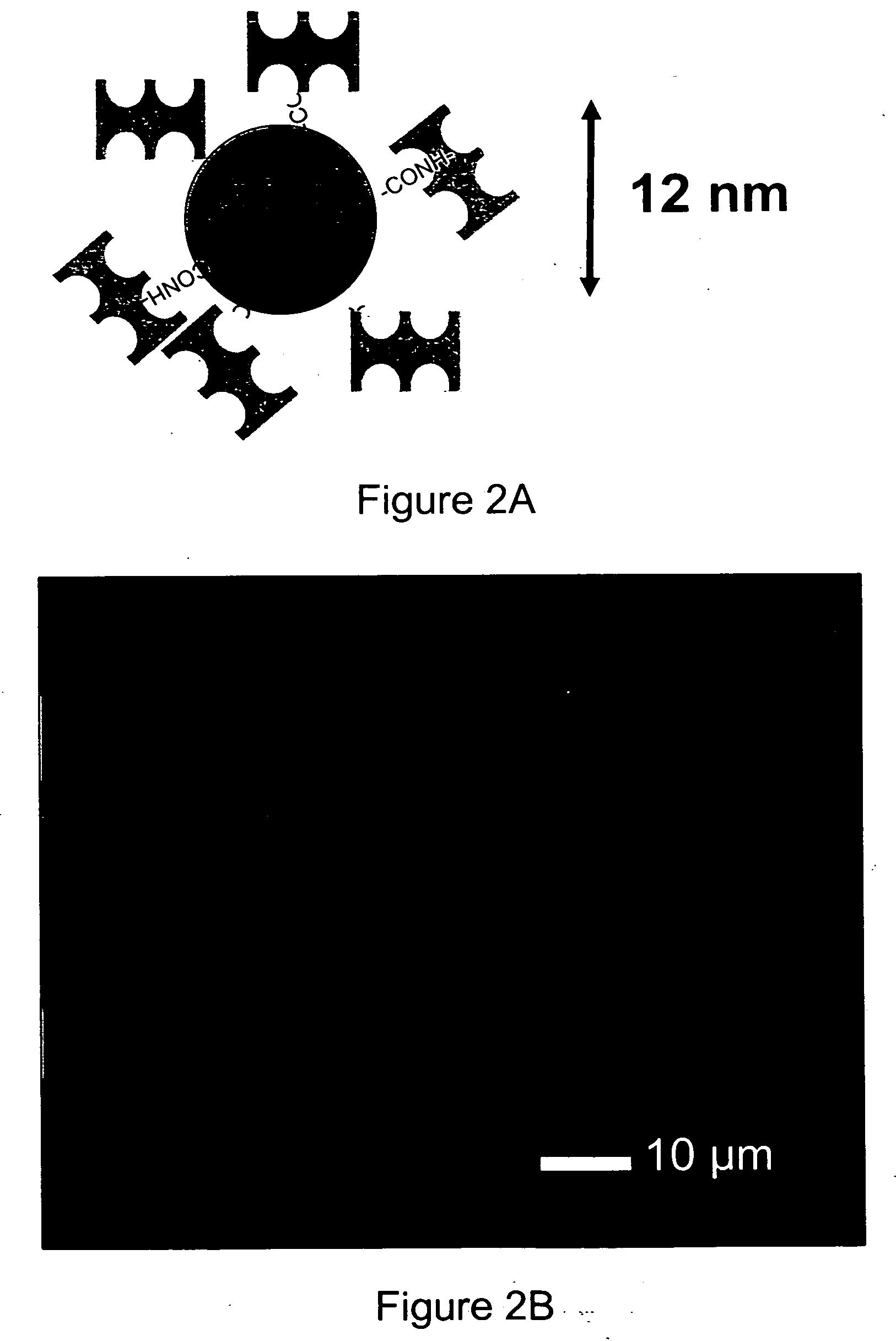Photogenerated polyelectrolyte bilayers from an aqueous-processible photoresist
a photolithography and polyelectrolyte technology, applied in the field of photolithography resists, can solve the problems of limited application of photolithography to patterning of biomacromolecules, denature proteins and destroy their activity, and limit spatial resolution
- Summary
- Abstract
- Description
- Claims
- Application Information
AI Technical Summary
Benefits of technology
Problems solved by technology
Method used
Image
Examples
example 1
Preparation of a Photoresist
[0046] To obtain a photoresist which could be processed using biological buffers, a random terpolymer was synthesized by free radical polymerization of o-nitrobenzyl methacrylate (o-NBMA) with methyl methacrylate (MMA) and poly(ethylene glycol) methacrylate (PEGMA).
[0047] O-nitrobenzyl methacrylate was prepared by reacting 2-nitrobenzyl alcohol (8.42 g) with methacryloyl chloride (4.84 ml, Lancaster Synthesis) in the presence of triethylamine (7.68 ml) in dichloromethane (DCM) at 0° C. for 12 hours. The mixture was filtered and the solvent evaporated. The crude mixture was purified by silica gel chromatography with 6:1 hexane / ethyl acetate. 1H NMR (Varian 300 MHz, CDCl3): δ 1.99 (s, 3H), δ 5.60 (s, 2H), δ 5.65 (s, H), δ 6.2 (s, H), δ 7.62 (m, 3H), δ 8.10 (d, H).
[0048] The photoresist was synthesized by free radical polymerization of methyl methacrylate (6.3 ml), o-nitrobenzyl methacrylate (6.2 ml), and poly(ethylene glycol) methacrylate (PEGMA, 2.9 ml,...
example 2
Preparation and Patterning of Photoresist Layer on a Substrate
[0050] Poly(allylamine) hydrochloride (PAH, Mw˜70,000) was adsorbed on glass coverslips or silicon substrates (dry thickness 3 nm), and a 130 nm thick film of photoresist polymer was subsequently spin-coated over the polycation monolayer. Photoresist films were then exposed under a UV lamp (254 nm, 2.25 mW / cm2) for various times and rinsed with PBS for 1 minute. The thickness of dried films (measured by ellipsometry) after UV exposures of ≧10 min was 6-10 nm, indicating dissolution of the majority of the polymer but retention of a layer significantly thicker than the initial PAH film (FIG. 3A). We hypothesized that this remaining film was a polyelectrolyte bilayer formed in situ at the photoresist / PAH interface by electrostatic cross-linking of newly-formed carboxylic acid groups to amines on the PAH during WV exposure. To test this hypothesis, photoresist-coated substrates were WV-exposed for 15 minutes through a TEM gr...
example 3
Biotinylation of Photoresist Polymer
[0052] Hydroxyl termini of PEGMA units in the photoresist were carboxylated for further functionalization (FIG. 4). Briefly, the photoresist polymer (9 g) and succinic anhydride (5.52 g) were added to a three-neck flask with condenser, and 250 ml anhydrous dichloroethane was cannulated. The photoresist polymer was observed to quickly dissolve while the succinic anhydride remained suspended in the solvent. The mixture was degassed 15 minutes by bubbling nitrogen, then N-methylimidazole (Aldrich, 72 μl) was added dropwise with stirring. The reaction was carried out for 15 hours at 65° C. The carboxylated photoresist was purified by sequential precipitations in diethyl ether and 5 vol % aqueous HCl. The polymer was washed 18 hours by stirring in 5 vol % aqueous HCl, recovered by filtration, and dried at 60° C. in vacuo. The carboxylated photoresist polymer was biotinylated by coupling amine-PEO-biotin (3 ethylene glycol repeats, Pierce Biotechnology...
PUM
 Login to View More
Login to View More Abstract
Description
Claims
Application Information
 Login to View More
Login to View More - R&D
- Intellectual Property
- Life Sciences
- Materials
- Tech Scout
- Unparalleled Data Quality
- Higher Quality Content
- 60% Fewer Hallucinations
Browse by: Latest US Patents, China's latest patents, Technical Efficacy Thesaurus, Application Domain, Technology Topic, Popular Technical Reports.
© 2025 PatSnap. All rights reserved.Legal|Privacy policy|Modern Slavery Act Transparency Statement|Sitemap|About US| Contact US: help@patsnap.com



